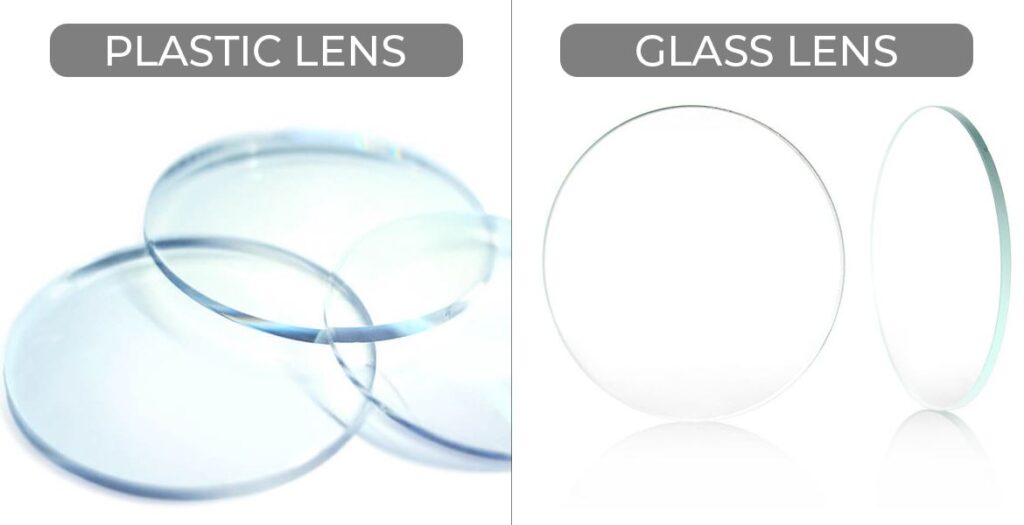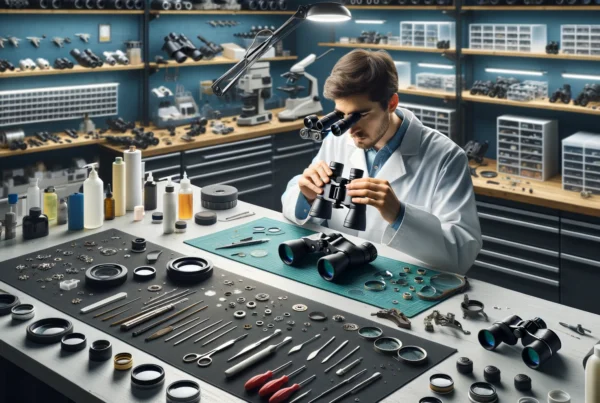Contents
Whether you’re an avid nature enthusiast, an astronomy aficionado, or simply enjoy the thrill of birdwatching, a good pair of binoculars can open up a world of wonder and discovery. But have you ever wondered what lies behind the captivating images that these optical marvels deliver? The answer lies in the lens materials – the heart and soul of binoculars.
Binocular lenses are an essential component of binoculars, and they come in different materials, including glass and plastic.
In this article, we will explore the differences between glass and plastic lenses, including their advantages and disadvantages.
Lens Materials Unveiled
Before we start on this enlightening comparison, let’s unravel the essence of binocular lens materials. Both glass and plastic hold their unique characteristics that profoundly impact your viewing experience.
Glass, known for its exceptional optical clarity, enables the finest details to come to life, while plastic offers affordability and portability, making binoculars your ideal travel companion.
Glass Lenses
Glass lenses have been in use for a long time and are still a popular choice for many people.
Advantages
- High Refractive Index: Glass has a higher refractive index than plastic, which means that it can be made thinner while still maintaining the same optical properties.
- Optical Quality: Generally superior in terms of clarity, sharpness, and light transmission.
- Durability: Less susceptible to scratches compared to plastic.
- Color Fidelity: Better color reproduction and less chromatic aberration.
- Special Coatings: More likely to benefit from high-quality coatings for enhanced performance.
Disadvantages
However, glass lenses also have some disadvantages.
- Weight: Usually heavier than plastic, which may be a concern for long periods of use.
- Cost: Typically more expensive due to higher manufacturing costs.
- Fragility: More susceptible to breaking upon impact compared to plastic.

Plastic Lenses (often Polycarbonate)
Plastic lenses are a popular alternative to glass lenses.
Advantages:
- Lightweight: Generally lighter than glass, making for easier handling and portability.
- Cost: Usually less expensive to produce, leading to cheaper retail prices.
- Durability: More resilient to impact and less likely to shatter.
Disadvantages:
However, plastic lenses also have some disadvantages.
- Optical Quality: Often inferior in terms of light transmission and clarity.
- Durability: More susceptible to scratches, affecting long-term use.
- Limited Coatings: Less likely to have advanced coating technologies applied.
Which One’s Better: Glass or Plastic?
- For Casual Users: If you’re a casual user or need binoculars that are lightweight and more affordable, plastic lenses might be sufficient for your needs.
- For Enthusiasts and Professionals: If you’re an enthusiast or a professional requiring superior optical performance, the extra investment in glass lenses would likely be justified.
The Rise of the Plastic Titans: Budget-Friendly and Lightweight
Not to be outdone, plastic lenses have surged in popularity, offering budget-conscious explorers a ticket to adventure.
Light as a feather, they ensure you can travel further and explore longer without the burden of weight. While they might not boast the optical prowess of their glass counterparts, they bring affordability to the table, making high-quality optics accessible to everyone.
Lens Coatings
Both glass and plastic lenses can benefit from lens coatings, which can improve their optical properties and durability. Lens coatings can reduce reflective loss and improve light transmission, minimize detrimental reflections and interference effects, optimize beneficial reflections, repel water and grease, and even protect the lens from scratches.
Some common types of lens coatings include anti-reflective, UV-resistant, and phase correction coatings.
Frequently Asked Questions (FAQ’s)
Here are some frequently asked questions (FAQs) and answers about using an air fryer for the first time:
What is the main difference between glass and plastic binocular lenses?
The main difference lies in the material used to construct the lenses. Glass lenses offer superior optical clarity, minimal distortion, and excellent light transmission, resulting in high-quality images. On the other hand, plastic lenses are more budget-friendly and lightweight, making them suitable for casual users and travelers. However, they may compromise slightly on optical performance compared to glass lenses.
Which lens material is better for stargazing and astronomy?
For stargazing and astronomy, glass lenses are generally preferred due to their exceptional optical clarity and ability to reduce chromatic aberration. These properties ensure that you can observe celestial objects with greater detail and accurate color representation, making your astronomical experiences more immersive and rewarding.
Do glass lenses make binoculars heavier than plastic lenses?
Yes, glass lenses tend to add more weight to binoculars compared to plastic lenses. As a result, binoculars with glass lenses can be bulkier and may not be as ideal for extended use or activities that require lightweight gear, such as hiking or travel.
Are plastic lenses more prone to scratching than glass lenses?
Yes, plastic lenses are generally more susceptible to scratching and wear over time compared to glass lenses, which are known for their scratch-resistant properties. Proper care and handling are essential for preserving the optical quality of plastic lenses.
Which lens material performs better in low-light conditions?
Glass lenses tend to perform better in low-light conditions due to their higher light transmission capabilities. They allow more light to pass through the lenses, resulting in brighter images even in dimly lit environments. This feature makes glass lenses suitable for activities like stargazing during twilight or dawn.
Are there any eco-friendly options for lens materials?
Yes, some manufacturers are adopting eco-friendly practices in the production of plastic lenses. They use recycled materials and implement sustainable manufacturing processes to reduce the environmental impact. Choosing binoculars with eco-friendly plastic lenses can be a more sustainable choice for environmentally conscious consumers.
Can you replace plastic lenses with glass lenses in binoculars?
In most cases, binoculars come with fixed lenses, and it is not possible to replace the lenses yourself. Binoculars with glass lenses are designed and optimized for their specific optical properties, and altering the lenses may result in poor performance or damage to the device. It is best to choose binoculars with the desired lens material from the outset.
Which lens material is better for birdwatching?
Birdwatching often involves observing small and fast-moving subjects, making image clarity and detail crucial. For birdwatchers who seek precision and optimal viewing experiences, glass lenses are the preferred choice. The ability to see feather details and vibrant colors enhances the overall birdwatching experience.
To Conclude
Glass lenses offer optical clarity and scratch resistance, but they can be heavy and prone to shattering. Plastic lenses are lightweight and impact-resistant, but they are more prone to scratches and have a lower refractive index. When choosing between glass and plastic lenses, it’s important to consider your specific needs and preferences, as well as the type of lens coatings that are available.

A Binoculars enthusiast, who love exploring skies and watching birds. It is my hobby to collect Binoculars of different kinds and try to explore the world through various lenses. This is all I do to explore happiness by magnifying my beautiful world.




